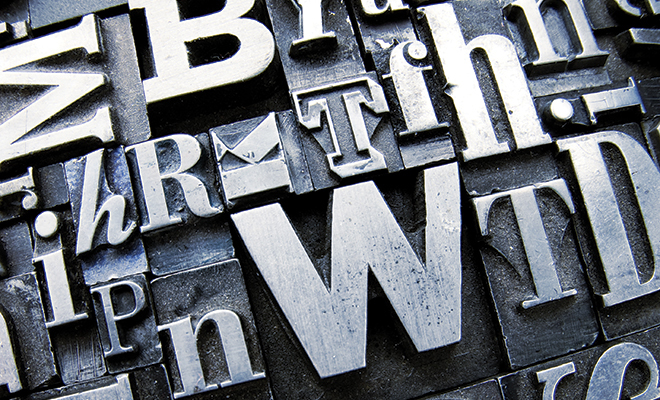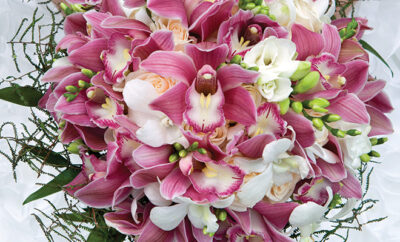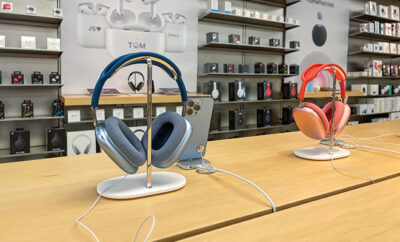
Handmade Paper and the Letterpress Art
Some have sourced the trend back to Martha Stewart, who began featuring it in her magazine to showcase personalized and unique wedding invitations. Some universities have introduced Book Arts programs, increasing interest in the field of bookmaking and printing.
For a variety of reasons, letterpress printing and handmade papers are making a comeback. Letterpress printing has changed little from the press with which Johannes Gutenberg printed the first Bible back in the 15th century. Using movable letters, usually made of wood or metal, arranged by a typesetter and run through ink, letterpress remained in widespread use through the second half of the 20th century, when offset printing, which transferred images to a rubber blanket, was developed and largely supplanted its role in printing books and newspapers. Of course, with the advent and wide use of the computer, most typesetting is now done digitally.
But the art–and it is an art–is experiencing a comeback, just as small-batch cooking and artisanal beer are having a resurgence. The trends are fueled by the desire for authenticity among, notably, millennials, but also among people of all generations seeking the look, taste and feel of lovingly prepared and non-mass-produced items, or seeking a craft that they can do themselves.
“Our customers are diverse, many ages and backgrounds, and especially people that care about or are attracted to good design and craftsmanship,” says Kathryn Hunter of Blackbird Letterpress. “In addition, I think since people are attached to their computers most of the day, there is an urge to connect with others more personally than email, sending a hand-written note, for thank you, for celebration, or for friendship.” Today, many specialty letterpresses are run by women, like Hunter, who is based in Baton Rouge, Louisiana.
Letterpress printing is usually set off by equally beautiful paper. For formal invitations and stationery, “rag,” linen or cotton, is preferred to paper pulp, for the thick, luxurious feel. You’ve probably seen, or used, items made with artisanal papers over the past decade or so.
There are a number of sources online with recipes for creating homemade paper, and it’s also a good avenue for recycling other papers. These artisanal papers are often rough to the feel, with fibrous pieces of paper, and pressed, adding to the design. Anything looking perfect is verboten.
A blogger who goes by one name, Jillee, explains on her website, One Good Thing, how the use of a simple recipe, six to eight pieces of scrap paper, a large, shallow container, a blender, two screen splatter guards, a sponge, a dry dish towel and water could create beautiful handmade papers that were easy enough to create with a child. Decorative items such as pressed flowers or seeds can be added to the mix.
“I do think that there has been a resurgence in letterpress printing because it is an artisanal trade,” Hunter said. “The printing presses used in letterpress printing are antique and the skill to use them is a learned and practiced process. It is also a printing technique that combines contemporary processes such as computer design and the creation of photo polymer plates with the centuries-old printing method.
“Once, letterpress was a process where the image was printed as flat as possible, with no physical impression showing in the paper. Today, since the presses are heavy and strong, and photo polymer plates are a hard material, letterpress printing stands on its own because the printed area creates a physical impression in the paper.”
People looking for something less formal than an engraved invitation, but with more quality than offset or digital printing, find letterpress a good choice. Martha Stewart takes her website viewers on a tour of the popular and historic Hatch Show Print in Nashville, Tennessee, one of the oldest letterpresses, founded in 1879, which produced fliers and posters for among others, The Grand Ole Opry. The printer painstakingly sets the wood or metal letters and tightens the “bed;” art is selected from a library with images dating back to the press’s inception or specially designed. The type is then set against the chosen image in colors desired by the client. Once the first print is approved, the job rolls off the presses just like in the old days. Stewart notes it takes “quite a bit of finessing to get these just right.” The look produced is individual and tactile, according to the printer, and it’s a plus that it looks handmade.
For Hunter, whose shop also does custom printing and design work, a recent memorable job was a wedding invitation that included a hand-illustrated map of South Louisiana, from Baton Rouge to New Orleans along the Mississippi River. “The illustration was inspired by antique maps and was special because it showed the area where the bride and groom traveled most. I love maps and anytime I can illustrate one is awesome.” ■
Sources: blackbirdletterpress.com, bookarts.ua.edu, marthastewart.com, mills.edu, onegoodthingbyjillee.com and uarts.edu.







